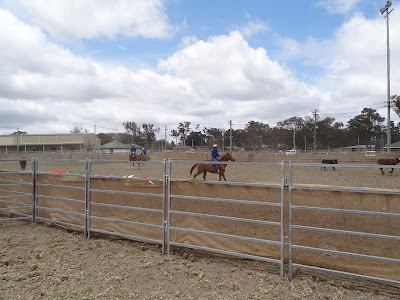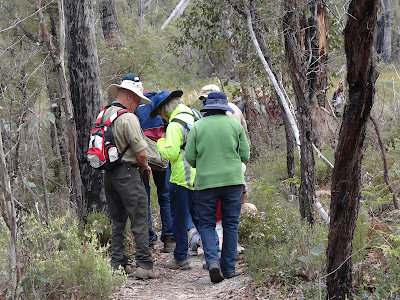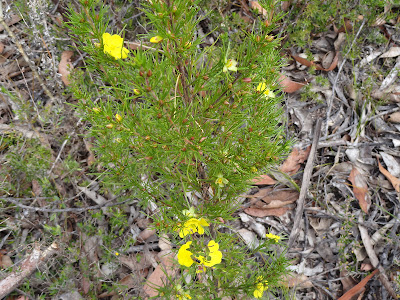2012 has NOT been as successful re chicken development.
Our first clucky hen started sitting in October.
She hatched 4 eggs, out of 7.
The chickens were,as usual, very cute.
The mother and her chicks were in the main chook pen....a large cage behind the barn.
 |
| The mother is a White Sussex, and here she is with her 4 new chicks. |
By day 3 of their lives we were minus one chicken.
By day 4 we were minus another.
And by day 6 they were all gone.
We have no idea what happened.
A predator of some ilk, definitely, but what?
A snake? Plenty of those on the farm.
A fox? Plenty of those about. A feral cat? We have seen one. A bird of prey? heaps of those. A goanna? Yes, a large one has been sighted.
But something had chicken entree on four occasions.
Our 2nd clucky hen sat on her eggs in November.
Two chickens hatched. Again, in the main chook pen.
I think you know what happens next? Yes. By day two of their existence they too were no more. Both eaten on the same day.
 |
| All our hens are White Sussex. So here is mother hen number two, with her 2 chickens. |
Our 3rd clucky hen started sitting on her eggs in late November.
We had to decide where to move the hen because leaving her, and her resulting brood in the main chook pen would surely result in whatever predator had enjoyed the previous 6 chickens, having more tender chicken for a meal.
 |
| And here is clucky hen numer three, sitting on her eggs in the main chook pen. |
A neighbour had a mobile, predator proof chook pen. I asked if we could borrow it. The answer was "yes"...as you'd expect from country folk.
It is a large rectangular cage, with fine mesh for walls and roof, and a larger mesh floor.
Nothing would be able to get in from above, or from the side, nor even burrow into it.
(You can see it, and get an idea of its size and structure from the photos below.)
So the neighbour, Cal, his wife, Elaine, and I manhandled the aforesaid cage onto our ute., and we moved the cage from his property to ours.
We waited until late one afternoon to move the hen, sitting on her eggs in a laying box. We covered the box with cardboard so that the hen would not be stressed during the transfer.
 |
| The transfer in progress....hen and nesting box are covered by cardboard. |
 |
| Now to get in, and push the box plus hen right down to the back of this safe cage. |
 |
| The mesh floor is hard on the knees, but we are nearly there! |
And it was just in time.
The next morning there was the hen, and THREE chicks in the cage. Very cute.
 |
| Day one of their lives. Two chicks under her beak, the other at her side. But safe! |
It is now day 4 of their lives, and they are still alive.
 |
| Four days old. |
Wonderful.
Whatever ate the others has no chance of eating these.
When they are large enough to not be eaten by whatever, we will put them back into the large chook pen.....from which ALL the hens and rooster are released every afternoon. They all have the afternoon to "free range" about the farm.....putting themselves back into the main cage at dusk.
Please keep your fingers crossed for our chickens.
With grandchildren arriving at the farm over the Xmas break it will be lovely to have some chickens for them to see.





















































